Introduction to Cells
Cells are the basic building blocks of all living organisms. They are the smallest unit of life and carry out all the processes necessary for an organism to function and survive. Understanding the structure and function of cells is fundamental to the study of biology.
Cell Theory
The cell theory is a fundamental principle in biology that states:
- All living organisms are composed of one or more cells.
- The cell is the basic unit of structure and organization in organisms.
- Cells arise from pre-existing cells.
Types of Cells
There are two main types of cells:
- Prokaryotic cells: These are simple cells that do not have a nucleus or membrane-bound organelles. They are found in bacteria and archaea.
- Eukaryotic cells: These cells have a true nucleus and membrane-bound organelles. They are found in plants, animals, fungi, and protists.
Cell Structure
Eukaryotic cells have several key structures:
- Cell membrane: The outer boundary of the cell that controls the movement of substances in and out of the cell.
- Nucleus: The control center of the cell that contains the genetic material (DNA).
- Cytoplasm: The gel-like substance inside the cell, where organelles are suspended.
- Organelles: These are specialized structures within the cell that perform specific functions, such as mitochondria for energy production, endoplasmic reticulum for protein synthesis, and Golgi apparatus for packaging and processing of cellular products.
Cell Function
Cells carry out a variety of functions necessary for life:
- Metabolism: Cells perform chemical reactions to obtain and use energy.
- Growth and reproduction: Cells grow and divide to produce new cells for growth, repair, and reproduction.
- Response to stimuli: Cells can respond to changes in their environment.
- Homeostasis: Cells maintain internal stability by regulating their internal environment.
Study Guide
To study "Introduction to Cells," it's important to focus on the following key areas:
- Understanding the cell theory and its implications for our understanding of life.
- Comparing and contrasting prokaryotic and eukaryotic cells, including their structures and functions.
- Exploring the structure and function of key organelles within eukaryotic cells.
- Recognizing the importance of cells in maintaining homeostasis and carrying out essential life processes.
Additionally, practicing with cell diagrams and microscopic images can help reinforce understanding of cell structure and function.
[Introduction To Cells] Related Worksheets and Study Guides:
.◂Biology Worksheets and Study Guides High School. Introduction to cells
Worksheet/Answer key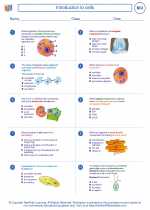 Introduction to cells
Introduction to cells  Worksheet/Answer key
Worksheet/Answer key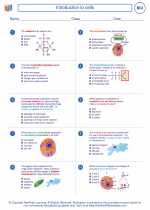 Introduction to cells
Introduction to cells  Worksheet/Answer key
Worksheet/Answer key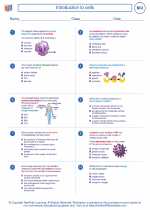 Introduction to cells
Introduction to cells  Vocabulary/Answer key
Vocabulary/Answer key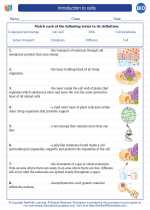 Introduction to cells
Introduction to cells  Vocabulary/Answer key
Vocabulary/Answer key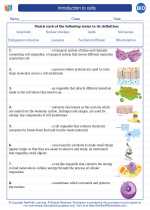 Introduction to cells
Introduction to cells  Vocabulary/Answer key
Vocabulary/Answer key Introduction to cells
Introduction to cells  Vocabulary/Answer key
Vocabulary/Answer key Introduction to cells
Introduction to cells 

 Worksheet/Answer key
Worksheet/Answer key
 Worksheet/Answer key
Worksheet/Answer key
 Vocabulary/Answer key
Vocabulary/Answer key
 Vocabulary/Answer key
Vocabulary/Answer key
 Vocabulary/Answer key
Vocabulary/Answer key
 Vocabulary/Answer key
Vocabulary/Answer key

The resources above cover the following skills:
History and Nature of Science (SG1, SG2,SG3, SG4)
The student demonstrates an understanding of the bases of the advancement of scientific knowledge by using an account of an event to recognize the processes of science used by historically significant scientists (e.g., Goodall, Watson & Crick, Newton).
History and Nature of Science: A student should understand the history and nature of science. A student who meets the content standard should:
Develop an understanding that historical perspectives of scientific explanations demonstrate that scientific knowledge changes over time, building on prior knowledge.